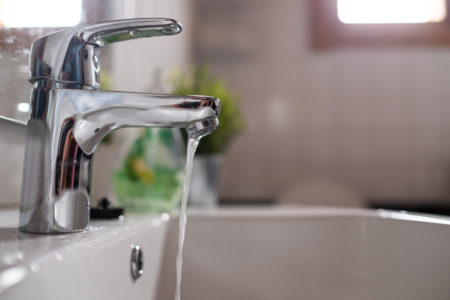6 Common Causes of Low Water Pressure
Filed under: Plumbing

Home water pressure can significantly affect the quality of living in your home. Low water pressure is a common plumbing issue that can present itself in several ways. Faucets can take forever to fill a sink or bathtub, your dishwasher or washing machine cycles might run longer, or your showerhead might not give you the pressure you desire. There are various causes of home water pressure problems. If you experience low pressure in the whole house, the first thing you should do is narrow down the reason. Today the experts at Fosh look at some of the most common issues and offer some solutions.
What Causes Low Water Pressure?
Low water pressure can make simple tasks, like washing the dishes and taking a shower, a hassle. To fix the issue, you need to understand the underlying cause. Below we’re sharing what causes low water pressure and what you can do to address the problem.
Buildup in Pipes
Over time, minerals, sediments, dirt, sand, and other particles accumulate in the water heater tank and connecting pipes. The buildup creates less space for the water to travel through, causing interference with your water pressure. If you suspect this is the cause, it’s best to call a plumbing professional to avoid a dangerous accident.
Closed Valves
The water flow in your home is controlled by two primary shutoff valves—one on or in your home and one at the curb valve. The water shutoff valve controls the flow of water into your home. If this valve isn’t fully opened, it will limit the amount of water passing through. Your water shutoff valve is typically located in the basement or on the outside wall of a utility area. A water meter valve that is closed or only partially opened can cause water pressure issues within your house. Unlike your water shutoff valve, the curb valve belongs to the city.
Clogged Pipes
If you still can’t find the culprit of your low water pressure, a clog could be the answer. Just like your water heater and the connecting pipes can become clogged with sediment buildup, clogs from debris and grime are also possible. Once blocked, these clogs can disrupt water flow, causing the pressure to go down. If not cleared, a clog can result in burst pipes.
Broken Pressure Reducing Valve
Most homes have a device that regulates and controls the water flow, called a water pressure reducing valve. It’s typically set by the manufacturer to around 45-60 psi. If you have low water pressure, you can try adjusting your regulator. If your water pressure reducing valve is old or malfunctions, your water pressure could spike or dip very low. If you suspect a faulty pressure reducing valve, call in a plumbing professional. Repair or replacement of this device requires the water to be shut off at the water meter valve, which is part of city property.
Faulty Fixtures
Faucets, showerheads, and other fixtures can be faulty or become clogged with continued use. These fixtures can be cleaned or replaced to restore normal water pressure.
Corrosion
If you live in an older home, your pipes may be corroded. Corrosion occurs when the metal interior of your pipes deteriorates, breaks down and eventually fails. It is most common in galvanized steel pipes. If your low water pressure is accompanied by a weird taste or discoloration, corroded pipes may be the culprit.
How to Fix Low Pressure in the Whole House
If your low water pressure is still present after fixing the problems mentioned above, a water pressure booster might help. The booster is designed to increase water pressure and help improve water flow. Many of the issues above should be addressed or repaired by a plumbing professional. If you’ve been searching for an expert plumber near me, look no further than Fosh! We’re your local plumbing experts for all your low water pressure issues. Contact us today at (610) 496-5700 to request a service.








